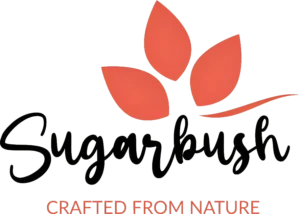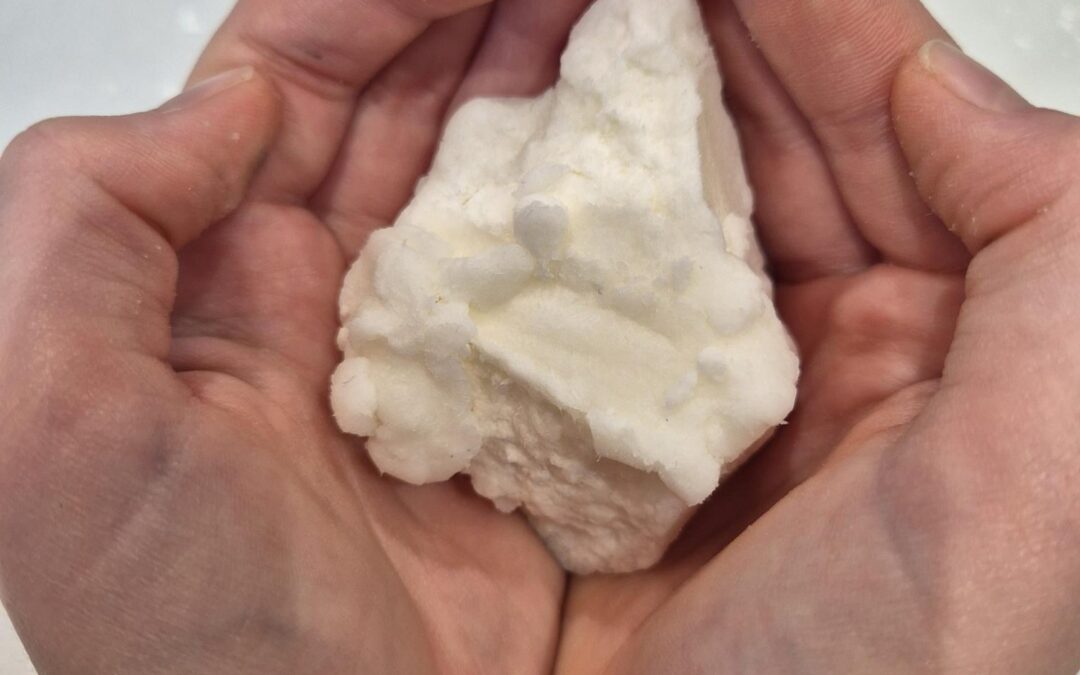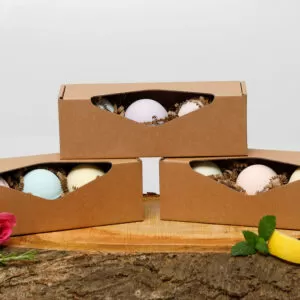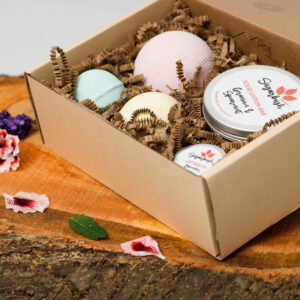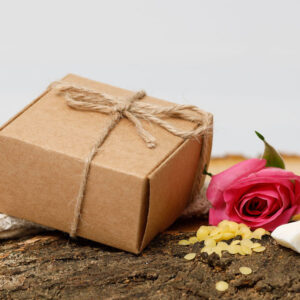If there’s one ingredient that perfectly sums up what Sugarbush stands for – simple, natural, effective care – it’s shea butter.
Rich, creamy and deeply moisturising, this butter has been treasured for centuries in West Africa, where it’s traditionally extracted from the nuts of the Vitellaria paradoxa (Karité) tree. Today it remains one of the most loved and widely used natural ingredients in skin and hair care.
In this post, we’ll look at what makes shea butter so special, how to use it and why it’s a cornerstone of my own anhydrous formulations at Sugarbush.
What exactly is shea butter?
Shea or karité butter (Butyrospermum Parkii Butter) is a fat extracted from the nut of the Karité or Shea tree (Vitellaria paradoxa), which grows in the Sahel region of Africa. It’s produced in several countries, including Nigeria, Mali, Burkina Faso, Ghana, Côte d’Ivoire, Benin and Togo.
Traditionally, the nuts are boiled in water over an open fire, then ground into a paste to separate the oils. This labour-intensive work is usually carried out by women in these regions.
In its pure form, shea butter is ivory or pale yellow with a naturally nutty, earthy scent. Depending on how it’s processed and the temperatures used, the texture can vary but it’s typically soft, rich and easy to blend with other oils or butters. That versatility makes it perfect for cosmetic formulations.
Why shea butter works so well
Shea butter is rich in fatty acids (notably oleic, stearic and linoleic acid), vitamins, phytosterols and minerals. These compounds make it a superb emollient with a wide range of benefits for both skin and hair.
Key Benefits
1. Moisturising – The fatty acids in shea butter deeply hydrate the skin and create a barrier that helps prevent water loss.
2. Nourishing – The vitamin E content acts as an antioxidant, protecting against free radicals that can lead to premature ageing and dullness. Phytosterols also help nourish the skin.
3. Soothing – Shea butter’s anti-inflammatory properties make it ideal for calming irritation and redness.
4. Improving skin appearance – The high concentration of fatty acids can help soften fine lines and wrinkles. It’s also known to improve the appearance of scars and blemishes.
5. Hair care – Shea butter helps tame frizz and add shine, particularly for dry or textured hair types.
Because of these properties, shea butter has been used for centuries in Africa as a deeply nourishing balm. It melts at body temperature and absorbs beautifully into the skin, rather than sitting on the surface. Best of all, it’s suitable for most skin types and can even be used neat as a quick, effective moisturiser.
Unrefined vs Refined shea butter
If you’ve seen “unrefined” and “refined” shea butter listed in ingredients, here’s the difference:
• Unrefined shea butter is the most natural form, with minimal processing. It retains the highest level of nutrients and is often used in artisanal or organic skincare.
• Refined shea butter has been filtered and deodorised for a smoother texture, lighter colour and milder scent. This is perfect for formulations where a neutral fragrance is desired.
Simple ways to use shea butter at home
1. Moisturiser – Warm a pea-sized amount between your fingers and massage into dry skin.
It’s especially good to apply after a bath or shower, while skin is still slightly damp.
2. Lip rescue – A tiny dab softens dry or cracked lips and gives a natural sheen.
3. Hair smoother – Rub a small amount between your palms and lightly run through the ends of dry hair to tame frizz or add shine.
4. Cuticle treatment – Massage a little around nails before bed to soften cuticles and help prevent splits.
5. Under eye treatment – Apply a small amount under the eyes before bed to hydrate and soften the delicate skin.
6. Conditioning hair mask – Melt a teaspoon of shea butter and apply it to your dry hair. Leave for 30 minutes before washing out with shampoo for softer, shinier hair.
7. Treatment for cracked skin – Massage into cracked heels or dry elbows after a shower, while skin is slightly damp skin. For feet, slip on socks afterwards to help lock in moisture.
8. Natural make-up remover – Warm a small amount between your palms and gently massage over your face to remove make-up and impurities – cleaning and moisturising in one easy step.
9. Body butter – Blend shea butter with a light plant oil (like grapeseed) to create your own simple, nourishing body butter.
Why I love working with shea butter
When I first started making my own cosmetics, shea butter was one of the first ingredients I used and it truly changed how I thought about skincare. It showed me that you don’t need endless ingredients or complicated routines. Natural materials used thoughtfully can be incredibly effective. That belief still shapes everything I make for Sugarbush today: products that are kind to skin, kind to the planet and a joy to use without being complicated.
At Sugarbush, I believe in formulations that work in harmony with your skin, not against it.
That’s why my products are made in small batches, with ingredients like shea butter chosen for their integrity and performance. You’ll find shea butter in several of my most popular products, including our lotion bars and lip balms.
If you’d like to see how shea butter fits into your daily routine, explore our range of handmade, natural skincare on the Sugarbush website.
A note on sustainability
Shea butter production supports many communities in West Africa, particularly women’s co-operatives. Sourcing from suppliers who ensure ethical, sustainable harvesting and fair-trade practices is one way to support those communities. By choosing products that use responsibly sourced shea butter, you’re helping to support traditional livelihoods while enjoying a naturally luxurious ingredient.
